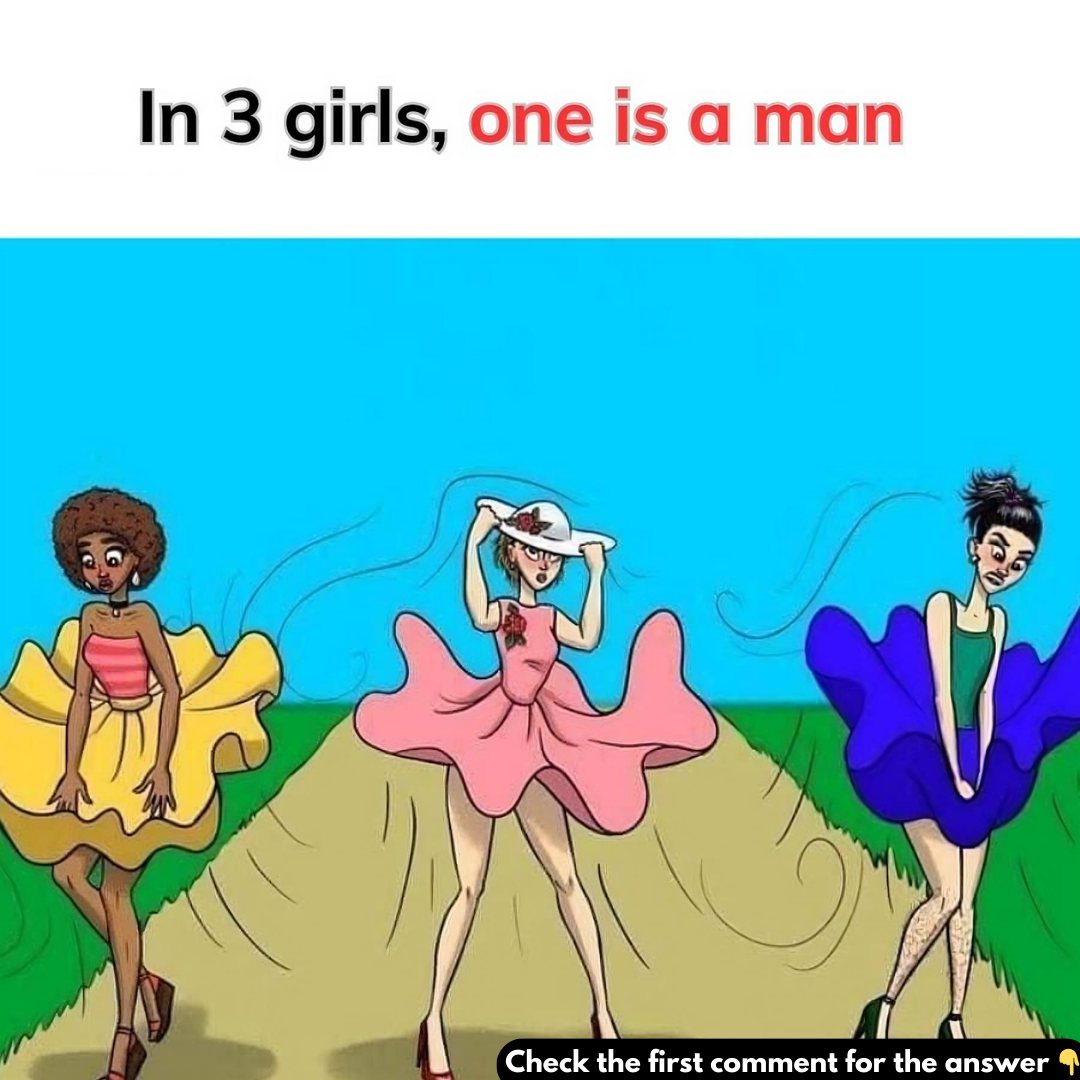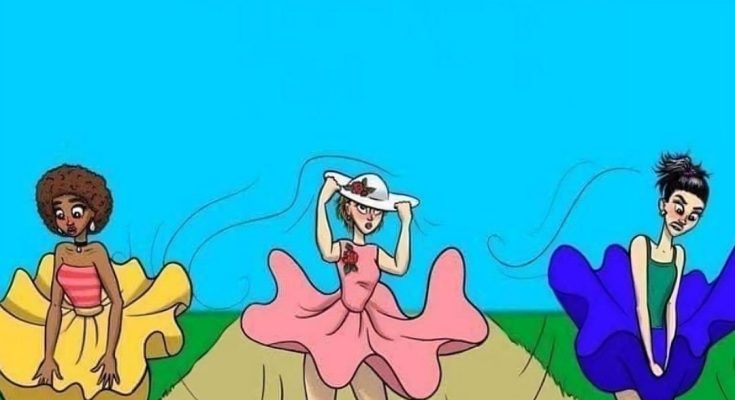Have you ever come across a puzzle that seems simple at first but has a twist that trips up almost everyone? Today, we’re diving into one such brain teaser that’s been circulating on social media, baffling users left and right. The challenge sounds straightforward: “In a group of 3 girls, one is actually a man.” Sound intriguing? Let’s see if we can solve this tricky puzzle by tapping into our observational skills!

At first glance, this puzzle seems like a no-brainer, but that’s precisely where it tricks you. Our brains are wired to rely on first impressions, especially when interpreting visual cues. This particular challenge takes advantage of that instinct by presenting a scenario where assumptions can easily lead you astray. To solve it, we’ll need to look beyond appearances and dig deeper into the details.
First Impressions Can Be Deceptive
When you first encounter this puzzle, your initial reaction is likely to focus on physical features. You might scan the image, looking for facial characteristics or body shapes that seem “off” or out of place. But here’s the catch: the answer isn’t as obvious as you might think. Instead of relying on appearances, this puzzle plays with our perception by challenging us to focus on something less visible—behavior.
The solution lies in how the three individuals react to their surroundings, not just how they look. Let’s break it down step by step.
Observing the Details
To crack this puzzle, we need to slow down and carefully observe what’s happening.
-
- Examine the Setting: The image shows three individuals, all dressed as women, standing outside in a windy environment. The wind is blowing their skirts upward, creating an awkward moment that grabs your attention. At first, all three appear to be reacting similarly to the gust of wind, but if you look closer, you’ll notice a subtle difference in how each person handles the situation.
- Focus on Reactions: Watch carefully how each individual reacts to their skirts being lifted by the wind. Two of the people seem embarrassed, quickly trying to hold down their skirts to avoid further exposure. However, the second person’s behavior stands out for a different reason: instead of focusing on their skirt, they’re more concerned with holding onto their hat.
- Identify the Odd One Out: This behavior is the clue we’ve been looking for. The second person’s lack of concern about their skirt suggests something unusual. While the other two are focused on maintaining their modesty, the second person seems unbothered by the wind lifting their skirt, instead choosing to secure their hat.
The Answer Lies in the Behavior
The key to solving this puzzle is in the behavior, not appearance. The second person’s reaction to the wind is the giveaway—they are the only one who doesn’t seem concerned with the skirt being blown around. This unusual response suggests that the second individual is likely the man in disguise. Since the exposure of the skirt doesn’t create the same level of embarrassment for him as it does for the others, his attention is focused elsewhere.
So, the answer is that the second individual is the man in disguise, and his indifferent reaction to the skirt-blowing scenario gives him away.
Why Do We Get Caught Off Guard?
Why do so many people struggle with this puzzle? It all comes down to our brain’s reliance on stereotypes and snap judgments. When faced with visual challenges, we often rely on first impressions based on physical traits, expecting certain behaviors to match our assumptions about gender. When these expectations don’t align, it’s easy to overlook the subtle clues that point to the correct answer.
This puzzle is brilliant because it disrupts those assumptions. It forces us to pay attention to behavior rather than appearance and to question our initial perceptions.
Sharpening Your Observational Skills
Puzzles like this one aren’t just fun—they also help sharpen your critical thinking and observational skills. They teach us that our first impressions can often be misleading, and that looking for less obvious clues can lead to better problem-solving.
Here are a few tips for approaching visual puzzles with a more analytical mindset:
- Slow Down: Don’t jump to conclusions based on first impressions. Take your time to observe all the details.
- Look for Behavioral Clues: In puzzles involving people, their behavior can often reveal more than their appearance.
- Question Assumptions: Avoid letting stereotypes dictate your answer. Keep an open mind and consider all possibilities.
- Practice Regularly: The more you engage with puzzles like this, the better your brain becomes at spotting hidden details and solving complex problems.
Did This Puzzle Trick You?
So, did you manage to solve the puzzle on your first try, or did it stump you? Don’t worry if it fooled you—the best puzzles are the ones that make us think twice! By playing on our assumptions, this brain teaser reminds us how easily we can be misled by appearances.
Visual puzzles like this one challenge us to think critically, question our instincts, and look beyond the surface. If you enjoyed this challenge, there are plenty more brain teasers out there to stretch your analytical skills and provide some fun along the way.
Keep Testing Your Brain!
This puzzle about spotting the man among three girls was a great mental workout and a reminder that the answer often lies in the details we least expect. It encourages us to think beyond first impressions and conventional thinking.
If you enjoy puzzles like this, don’t stop here—keep challenging yourself with more! Not only are they a great way to pass the time, but they also help keep your brain sharp and alert. So, what about you? Were you able to solve the puzzle right away, or did it catch you off guard? Share your thoughts and experiences in the comments below—let’s see who’s part of the sharp-eyed crew!



